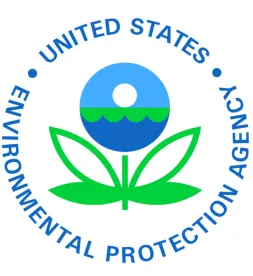On April 21, 2014, the United States Environmental Protection Agency (EPA) and the U.S. Army Corps of Engineers formally proposed a rule establishing a regulatory definition of the term "waters of the United States." This definition, if adopted, would establish the limits of federal jurisdiction over surface waters found anywhere in the United States. The agencies' joint Notice of Proposed Rulemaking (NPR) can be found here at 79 Fed. Reg. 22188. An extended period for notice and comment on this proposed rule ends on July 21, 2014.
The limits of federal jurisdiction over surface waters has been the subject of several critical and controversial decisions of the U.S. Supreme Court, and is of vital importance to anyone who owns, or uses, or is thinking of acquiring land that contains or is situated near any surface streams, wetlands, rivers, lakes, pond, gullies, or virtually any other surface feature that holds or carries water, or that did so in the past, or that might do so in the future.
The proposed rule, which has been in the works for many months, reflects the agencies' effort to define "waters of the United States" with as close to a "bright line" rule as possible in a manner that is consistent with the rather murky standards suggested by recent U.S. Supreme Court decisions. In the NPR, the agencies hasten to emphasize that federal jurisdiction would not, under the proposed rule, be unlimited. Nevertheless, the proposed rule, if adopted, would potentially extend the reach of federal jurisdiction to some surface waters that have generally not been considered by many to be "waters of the United States."
The proposed definition of "waters of the United States" includes categories of waters that are jurisdictional, i.e., subject to federal regulation, by rule, meaning that a case-by-case determination of the application of federal jurisdiction would not be required once a water is found to fall within one or more of these categories. Some of these categories are not new, including the following:
- Traditional navigable waters, i.e., waters which are currently used, were used in the past, or may be susceptible to use in interstate or foreign commerce, including all waters which are subject to the ebb and flow of the tide;
- Interstate waters, including interstate wetlands;
- The territorial seas; and
- Impoundments of the foregoing.
The proposed rule would add the following categories to the list of categories that would also be jurisdictional by rule:
- All tributaries of traditional navigable waters, interstate waters, territorial seas, and impoundments of such tributaries;
- Wetlands adjacent to the foregoing; and
- Waters other than wetlands that are "adjacent" to other jurisdictional waters.
The proposed rule contains expansive definitions of some of the key terms used in these categories, including "adjacent" (and its imbedded term "neighboring"), and "tributary."
Finally, the proposed rule would provide for a category of waters that would be considered jurisdictional not by rule, but instead on a case-by-case basis. These are "other waters, including wetlands, provided that those waters alone, or in combination with other similarly situated waters, including wetlands, located in the same region, have a significant nexus to" traditional navigable waters, interstate waters, and the territorial seas. The concept of a "significant nexus" was a key element in a pivotal concurring opinion authored by U.S. Supreme Court Justice Anthony Kennedy in Rapanos v. United States, 547 U.S. 715 (2006), a case involving federal jurisdiction over adjacent wetlands. Under the proposed rule, a "significant nexus" would exist when "a water, including wetlands, either alone or in combination with other similarly situated waters in the region . . . significantly affects the chemical, physical, or biological integrity of" a traditional navigable water, interstate water, or the territorial seas.
If adopted as proposed, the new definition of "waters of the United States," which the agencies would incorporate into all Clean Water Act and other federal regulatory programs that employ that term, is certain to be controversial and to draw extensive comment and litigation – either a facial challenge or an as-applied challenge. The proposed rule, which was released in unofficial draft form several weeks ago, has also already prompted charges by Congressional Republicans of overreaching by the Democratic administration.



 />i
/>i

